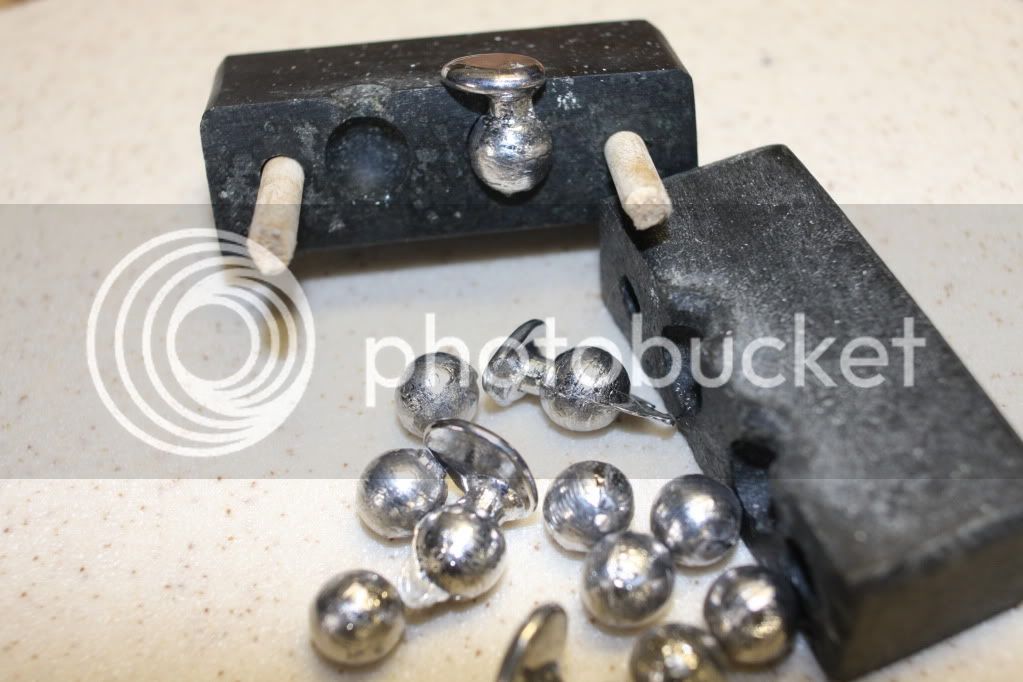Larry Pletcher
50 Cal.
- Joined
- Jul 27, 2006
- Messages
- 1,313
- Reaction score
- 67
Dennis at Mill Creek sent me a double cavity .490 soap stone mold, and I tried casting balls last night. I'm used to casting from a lyman with a sprue cutter, so this was a new game. It's pretty cool. I held the halves together with a small clamp to keep my hands out of the way. The ball and sprue came out easily. I tossed the first few back in the pot and watched as the balls improved as the mold heated.
I cut the sprues with a side cutter, and that left a pretty ragged sprue. I took a file to the sprue and to any flash that showed up. I haven't weighed any yet and probably won't. The weigh variation will be determined largely by how uniformly you cut the sprue. I wouldn't expect these balls to set records at Friendship; no one expects that. However, if you place yourself in the middle of nowhere in the early 1700s, I think you would pleased to have one of these molds.
Thinking more about this I guess that an 18th century rifleman would probably cut the sprues with a knife. Any thoughts here?

Regards,
Pletch
I cut the sprues with a side cutter, and that left a pretty ragged sprue. I took a file to the sprue and to any flash that showed up. I haven't weighed any yet and probably won't. The weigh variation will be determined largely by how uniformly you cut the sprue. I wouldn't expect these balls to set records at Friendship; no one expects that. However, if you place yourself in the middle of nowhere in the early 1700s, I think you would pleased to have one of these molds.
Thinking more about this I guess that an 18th century rifleman would probably cut the sprues with a knife. Any thoughts here?

Regards,
Pletch





